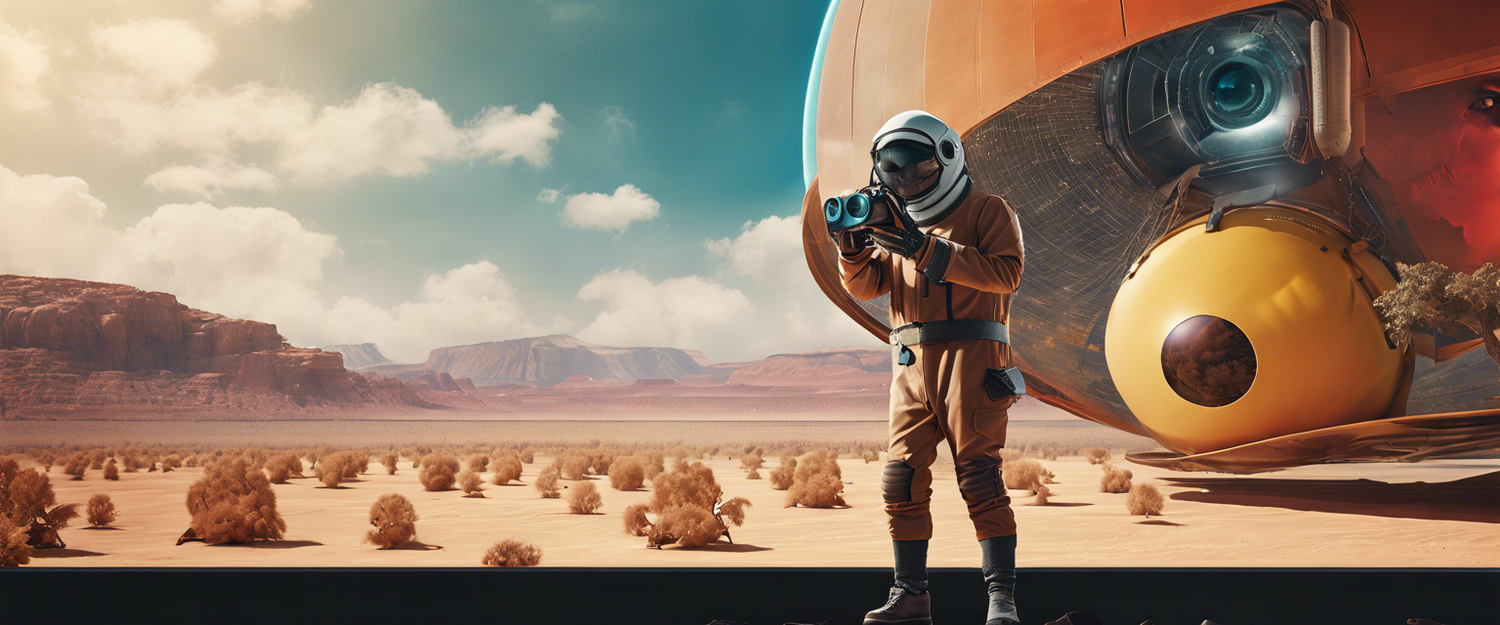Developing Intelligent Agents with CrewAI
In the dynamic realm of artificial intelligence, intelligent agents are becoming increasingly significant. These agents can make decisions, learn from their environment, and perform tasks ranging from basic automation to complex data analysis. This tutorial will guide you through creating intelligent agents using CrewAI, a powerful framework designed to simplify AI agent development.
Why CrewAI and Understanding Agent Systems
CrewAI stands out by handling many complexities involved in building intelligent agents, allowing you to focus on core logic and behavior. It's suitable for beginners and experienced developers alike, making it easier to bring AI ideas to life efficiently.
An agent system comprises individual agents that interact with their environment to achieve specific goals: Each agent perceives its environment, makes decisions based on observations, and acts accordingly. Some agents can even learn from past experiences, improving their performance over time.
Getting Started and Enhancing Agents
Let's begin by creating a basic agent that performs a straightforward task. You'll learn how to define the agent's purpose, set up its environment, and configure its behavior based on inputs.
Next, we'll integrate agents with Large Language Models like GPT-4, enabling them to handle complex language-based tasks. You'll learn how to connect agents to LLMs and apply these integrations practically.
In this section, we'll also explore how to link your agents with external resources, expanding their capabilities and making them more powerful and useful. CrewAI is adaptable across various industries, and we'll discuss how to modify your agents for different scenarios, demonstrating the framework's versatility.
Setting Up Your Development Environment
Before we start building intelligent agents with CrewAI, it's important to set up a proper development environment. This ensures that everything runs smoothly and that your project remains organized.
Setting Up a Virtual Environment
A virtual environment is like a separate workspace on your computer that keeps all the dependencies and libraries for your project isolated from others. This isolation helps avoid conflicts between different projects and ensures that your project uses the correct versions of libraries.
For Windows:
- Open your preferred Integrated Development Environment (IDE) like PyCharm, VS Code, or even just the Command Prompt.
- Navigate to the directory where you want to create your project using the
cdcommand. - Run the following command to create a virtual environment:
- Activate the virtual environment by running:
python -m venv myenvmyenv\Scripts\activateYou'll notice that your command line now shows (myenv), indicating that the virtual environment is active.
For MacOS:
- Open Terminal and navigate to the directory where you want your project.
- Run the following command to create a virtual environment:
- Activate it by running:
python3 -m venv myenvsource myenv/bin/activateThe terminal prompt will change, showing (myenv) before your directory path, indicating that the virtual environment is active.
With the virtual environment active, you can now install the necessary libraries without affecting other projects on your system.
Installing CrewAI
With your virtual environment set up, the next step is to install CrewAI, the framework that will power our intelligent agents.
Ensure your virtual environment is active (you should see (myenv) in your terminal or command prompt). Run the following command to install the main CrewAI package:
pip install crewaiTo install additional tools helpful for your agents, you can run:
pip install 'crewai[tools]'Alternatively, you can install both the main package and tools together:
pip install crewai crewai-toolsThese commands will download and install everything you need to start working with CrewAI.
Creating Your Project
Now that CrewAI is installed, it's time to create your project. CrewAI provides a handy command to set up the basic structure of your project, saving you time and ensuring that everything is organized correctly from the start.
Run the following command in your terminal:
crewai create crewReplace crew with the name you want for your project. This command will create a folder with your project name and set up the basic structure inside it.
Understanding the Project Structure
After running the crewai create crew command, a project structure will be created for you. Here's what it looks like:
- .gitignore
- pyproject.toml
- README.md
- src/
- my_project/
- __init__.py
- main.py
- crew.py
- tools/
- custom_tool.py
- __init__.py
- config/
- agents.yaml
- tasks.yamlFile Descriptions
-
.gitignore: This file tells Git (a version control system) which files or folders to ignore, helping keep unnecessary files out of your version history. -
pyproject.toml: Contains configuration information for your project, including dependencies and settings needed to build and run your project. -
README.md: A markdown file where you can describe your project, provide instructions, and document important details. -
src/: Contains the main source code for your project. -
my_project/: Inside this folder, most of your project code will reside. -
__init__.py: Makes Python treat the directory as a package; usually doesn't need modification. -
main.py: The main entry point for your project, defining how your agents run and the overall flow. -
crew.py: Where you define the logic of your agents, tools, and tasks, including custom functions and arguments. -
tools/: Directory for adding any custom tools that your agents may use. -
custom_tool.py: An example file to start adding your own tools. -
config/: Contains configuration files where agents and tasks are defined. -
agents.yaml: Defines the agents for your project, including roles, goals, and specific configurations. -
tasks.yaml: Where you define the tasks for agents, outlining expectations and output.
Customizing Your Project
Now that you understand the structure, you can start customizing your project. For instance, you might want to define a new agent in the agents.yaml file, outlining its role and goals. Then, define tasks in the tasks.yaml file of what the agent should do.
In the crew.py file, you'll write the actual logic that ties everything together. This setup gives you a solid foundation to start building intelligent agents with CrewAI.
Customizing Your Agents and Tasks
With your project set up, it's time to define the agents and tasks that will drive your content creation pipeline. This involves editing two key YAML files: agents.yaml and tasks.yaml.
Step 1: Navigating to the YAML Files
Navigate to the src/my_project/config/ directory where you'll find the agents.yaml and tasks.yaml files. These are crucial as they lay out agent behavior and responsibilities.
Step 2: Defining Agents in agents.yaml
Open the agents.yaml file in your IDE. This file defines the various agents participating in your project.
Here's an example breakdown:
researcher:
role: "Content Researcher"
goal: "Analyze content from a URL"
backstory: "Skilled in extracting insights.
planner:
role: "Content Planner"
goal: "Create an SEO-optimized outline"
backstory: "Expert in content strategy."
writer:
role: "Content Writer"
goal: "Craft engaging blog posts"
backstory: "Versatile writer across industries."
editor:
role: "Content Editor"
goal: "Refine and polish content"
backstory: "Focused on quality assurance." Step 3: Defining Tasks in tasks.yaml
Next, open tasks.yaml to assign specific tasks to each agent:
research_task:
description: "Analyze web content"
expected_output: "Comprehensive research report"
agent: "researcher"
planning_task:
description: "Generate SEO-optimized outline"
expected_output: "Organized outline for the blog post"
agent: "planner"
writing_task:
description: "Draft the blog post"
expected_output: "Well-written first draft"
agent: "writer"
editing_task:
description: "Review and refine the content"
expected_output: "Polished publication-ready post"
agent: "editor" Integrating Tools and Logic in crew.py
We will now integrate everything using the crew.py file. This file will hold the logic allowing agents to carry out their defined tasks.
Writing the Logic in crew.py
The crew.py file defines how each agent operates, how they interact with tasks, and manages workflows.
We start with imports, and define the classes, agents, tasks, and the connection between them. Each agent is then linked to its respective configuration in agents.yaml.
Setting Up the main.py File
The main.py file serves as the entry point, initiating the crew and running the tasks you've set up in crew.py.
This script handles imports, loads environment variables, and runs the crew to process tasks.
Running the Project
Once everything is in place, use the following command in your terminal to execute your project:
python main.pyReplace with your project's name. This command will run the crew, starting the task workflow you've defined.
You can expect logs detailing each agent's actions during execution along with the outputs stored in blog_post.md and new-logs.txt.
Conclusion
By following this guide, you've successfully set up and run a project using CrewAI. This includes defining agents, tasks, and the overall integration necessary for generating content automatically.
As you advance with CrewAI, you can expand upon this foundation, customizing agents to better suit unique needs, be it for content creation, research streamlining, or developing complex workflows. CrewAI is a robust tool to help fulfill these objectives efficiently. Happy coding!



اترك تعليقًا
تخضع جميع التعليقات للإشراف قبل نشرها.
This site is protected by hCaptcha and the hCaptcha Privacy Policy and Terms of Service apply.